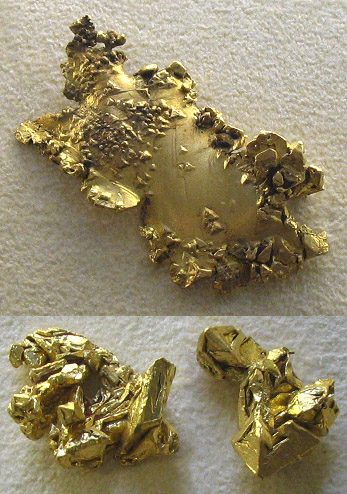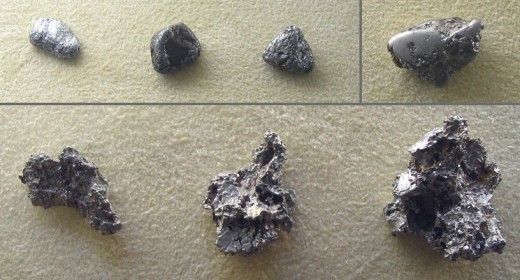How to Generate Interest Income Using The Price Ratio of Platinum to Gold
There are many ways a person can save for the future. For instance, you could open a bank account and let it accumulate interest until one is eligible for retirement. Another would be to buy precious metals such as gold or platinum. However, the second method has an issue in that precious metals by themselves do not earn interest like the first method.
Some people might have a problem with this and may the reason why they do not invest in precious metals. Instead, they will stick with savings accounts, certified deposits, bonds and so on. All of these have one thing in common. They earn interest, which over time should increase the amount of savings one has available when it is time to retire. A very useful benefit in the eyes of many people.
Precious metals do not normally earn interest, but it does not have to be that way
Still, for quite a number of people, precious metals are the preferred method of storing their wealth or savings. For instance, one of the biggest strengths of gold is that it is very liquid. In other words, you can take gold pretty much anywhere in the world and most people will give you something for it or they'll perform a service for you in exchange.
It is therefore not surprising to find gold in someone's portfolio, sometimes in quite significant quantities. At the same time, gold does not earn income like, for instance, stocks that pay a dividend. That is a significant drawback because gold is often held for the long term. If something does not generate income while you are holding it, it becomes much less attractive to certain investors. They would like to get paid for the time spent holding a certain asset.
Some companies and even governments have come up with a scheme where you store your precious metals with them and in return they will pay you interest for the amount of time they get to hold your gold, platinum, silver and so on. This might be the answer to some owners of precious metals as you get paid for what you have.
However, there are people who might not find this such a good idea. The problem is that you no longer have physical possession of your precious metals. First you have to turn over what is yours. Then you have to trust some company or government that will honor their word and return everything they took from you after a number of years.
A company could one day go bankrupt or the owners may just flee with everything. You never know what could happen if something is not in you possession. In a worse case scenario, you might one day find out that you have lost everything that you spent many years building up.

A possible compromise that allows you to keep possession and earn income from precious metals
Precious metals come in all shapes and sizes. Many owners of precious metals also tend to own not just gold, but also other metals such as silver and even platinum. A possible solution to the absence of interest income that some people might be interested in is to utilize the price fluctuations in these precious metals.
For instance, platinum and gold cost roughly the same for the same amount. A troy ounce of platinum is usually priced somewhat higher than gold, but not always. Gold can sometimes be more expensive than platinum for a number of reasons. Anyone following prices of gold and platinum must have noticed this. This is something than can be used to your benefit.
The price of gold and platinum will fluctuate relative to each other
The relationship between the price of platinum and gold can be expressed with the platinum-to-gold ratio. Simply divide the price of platinum and the price of gold with each other and you will know what the ratio is. If both platinum and gold cost the same, the ratio is equal to one. A ratio below one implies that platinum is cheaper than gold. Gold is cheaper than platinum when the ratio rises above one.
Generally speaking, the platinum-to-gold ratio tends to stay above one when economic conditions are okay. According to data from the U.S. Geological Survey (USGS), there is less platinum available above ground than gold, even though gold is less common in the Earth's crust compared to platinum. However, when the global economy is not doing so well, the platinum-to-gold ratio can fall below one and stay there for some time.
It can therefore be a good idea to hold platinum when the price of platinum is equal to or drops below that of gold. While this can last for some time, the greater expense involved with mining platinum should ensure that the price of platinum will climb back above that of gold once economic conditions improve and things are back to normal globally.
How to play the platinum-to-gold ratio when platinum is cheaper than gold or vice versa
In a nutshell, you can generate income from existing precious metal holdings by converting a portion of the more expensive metal into cash to buy the cheaper metal. For example, convert gold into platinum when platinum is cheaper. When platinum becomes more expensive than gold, you convert the platinum back to gold.
The platinum-to-gold ratio will determine when you should buy or sell one or the other metal. The actual prices of the metals don't really matter. For instance, the ratio is one regardless of whether platinum and gold are priced at $1300, $1500 or $2000. What is important is the actual price ratio of platinum relative to gold.
Notice that whenever you sell the more expensive asset to buy a cheaper asset, you are left with some residual cash. This is a profit that you can then treat as a dividend, interest income or extra cash to buy something. By repeating this over and over again, you can put your, for instance, gold to work for as long as you are holding gold as an asset.
Scenario 1: sell gold in order to buy platinum when the latter is cheaper
Suppose that someone owns 1000 troy ounces (oz) of gold. When platinum is cheaper than gold, the platinum-to-gold ratio drops below one. It's then time to sell some of the gold to buy platinum. As the gap in prices between platinum and gold widens, the ratio drops further and further below one. The more the ratio drops, the more gold should be converted into platinum. Since the platinum you are buying is cheaper than the gold you are selling, you are left with some cash after completing the transaction. Note that there will be transaction and other costs associated with converting one metal to another and they will detract from your profits.
Scenario 2: sell platinum in order to buy gold when the latter is cheaper
Now suppose that prices reverse and the platinum-to-gold ratio moves above one. Platinum is then worth more than gold. It is then time to sell the platinum you've bought earlier in order to buy back the gold you've sold earlier. Again, since the platinum you are selling is priced higher than the gold you are buying, you will have some cash remaining after each transaction. As platinum becomes more and more expensive than gold, the platinum-to-gold ratio will climb higher and higher. As the ratio climbs, more and more platinum is converted back to gold until there is no more platinum. You are finally left with the same exact amount of gold you started out with.

Conclusion
There are a number of people who keep substantial holdings of precious metals for various reasons. Most of the time, it just sits there and does nothing except fluctuate in value. The platinum-to-gold ratio is one method of changing that and put all that gold and platinum to work for you.
The amount of precious metals you have at any point in time stays fixed. In the above scenario, the amount in storage stays at exactly 1000 troy ounces. It is the composition that changes. There are times when you'll have, for instance, 200 oz of gold and 800 oz of platinum. That could change to 500 oz each or 800 oz of gold and 200 oz of platinum. Finally, you could wind up again with 200 and 800 oz of gold and platinum respectively.
There is some work involved. It is not like a savings account that accumulates interest without you having to do anything. The flip side is that you get to keep possession of all your precious metals and generate some income while doing so. Just remember to always buy low and sell high.







